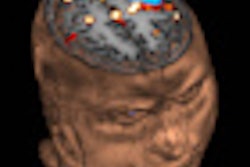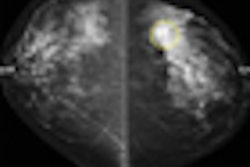French researchers have found good agreement between functional MRI (fMRI) and FDG-PET in assessing brain function in comatose patients. Their research indicates that fMRI potentially could help guide treatment of these individuals.
Clinical experience has shown that it can be very difficult to evaluate clinical brain function in patients who have received severe central nervous system injuries and are in minimally conscious or vegetative states. Better knowledge of a patient's brain function could guide rehabilitation planning or identify those patients unlikely to recover.
One traditional method of assessing preserved brain function is using electrophysiology techniques like evoked potentials, which are patient responses to auditory, visual, and somatosensory stimuli. Examples are tests such as measuring patient response when listening to a test tone or when the arms and legs are stimulated by an electrical pulse.
Imaging techniques like PET can also be used, but a research team led by Dr. Stephane Kremer from the radiology department at Hautepierre Hospital at the University Hospital of Strasbourg wanted to see if fMRI could be used in cases where evoked potentials or PET results were equivocal or discordant. The study was published online in the Journal of Neuroradiology on September 24.
Study protocols
Seven patients (three males and four females) with a mean age of 49 years were included in the study. All seven patients presented with chronic disorders of consciousness related to severe brain injuries, which included prolonged loss of oxygen following out-of-hospital cardiac arrest, severe head trauma, and intracerebral hemorrhage.
fMRI, PET, and evoked potential tests were performed on each patient within a three-day period, within a range of 120 days after initial brain injury.
fMRI scans, based in part on the measurement of signals induced by the blood-oxygen-level dependent (BOLD) concentration in the cerebral vasculature, were performed on a 1.5-tesla magnet (Magnetom Avanto, Siemens Healthcare, Erlangen, Germany) with an eight-channel head coil. Stimuli were presented using a system designed for fMRI (IFIS-SA, Invivo, Orlando, FL). Patients also were given headphones for auditory stimuli and to protect them from scanner noise. In addition, an LCD screen was positioned over the head coil in front of a patient's eyes for visual stimuli.
FDG-PET images were handled on a PET/CT system (Discovery ST, GE Healthcare, Chalfont St. Giles, U.K.), using 3D imaging with in-plane and axial resolutions of 3.27 mm. The CT scanner portion of the system featured eight-detector helical CT technology.
Data acquisition began 30 minutes after FDG injection, with a scan duration time of 15 minutes. PET images were reconstructed using CT for attenuation correction.
The evoked potential tests included three areas -- somatosensory (body sensation), visual, and auditory testing. Somatosensory evoked potentials were obtained by taking the average response to 200 median nerve electrical stimulations at the wrist, while visual evoked potentials were generated by averaging the responses to 100 reversals of red-light emitting diodes (goggles) presented separately to each eye. Event-related potentials were recorded using an auditory paradigm in passive conditions.
Modality analyses
The evoked-potential responses in 28 possible areas were then compared to fMRI reactions. fMRI with the metabolic activity from FDG-PET also was analyzed in the same anatomical areas, with 21 possible comparisons.
The researchers found there was agreement between fMRI and FDG-PET in 10 comparisons, while one comparison did not concur. In the comparison between fMRI and evoked potential, there was concordance in 11 comparisons, while four comparisons did not agree.
The disagreement in results between fMRI and PET or fMRI and the evoked potentials also were associated with discordant results between PET and evoked potentials in the vision and auditory stimuli for one patient. The result shows how difficult it can be to evaluate brain functions in some patients only with evoked potentials and PET, according to the researchers.
"Our data suggest that the evaluation of brain functions after severe brain injury would benefit from fMRI, because this technique can sometimes compensate for the pitfalls of evoked potentials or PET," the authors wrote. "A multimodal approach associating PET, evoked potential, and fMRI could, therefore, be of interest for physicians, patients, and even families who desperately expect even tiny information on prognosis."
fMRI's benefit
fMRI's advantage is its noninvasive ability to provide information about morphological brain lesions induced by a trauma or lack of oxygen, as well as brain functions, such as cortical integration of vision, audition, and sensitivity. Compared to evoked potential, fMRI can directly visualize cortical activation with anatomical localization in both cerebral hemispheres.
In conclusion, the researchers wrote that fMRI "increases the accuracy of neurological evaluation in our series of critically ill patients with acute brain injury, provided that the BOLD signal can be properly interpreted," and it can be "an additional tool of interest to complete evaluation in those patients where EP and PET examinations are discordant."
In addition, fMRI may help physicians "evaluate with more certainty severe residual neurological impairment and progress in ethical choices, if a real prognostic value can be observed among large cohorts of patients."
By Wayne Forrest
AuntMinnie.com staff writer
October 26, 2009
Related Reading
MRI spots brain abnormality in autistic children, May 4, 2009
Finger tapping with fMRI reveals autism secrets, April 28, 2009
MEG reveals sound processing delays in autistic children, December 2, 2008
Study maps brain abnormalities in autistic children, November 29, 2007
Studies shed light on autism effects and treatment, December 6, 2006
Copyright © 2009 AuntMinnie.com



















